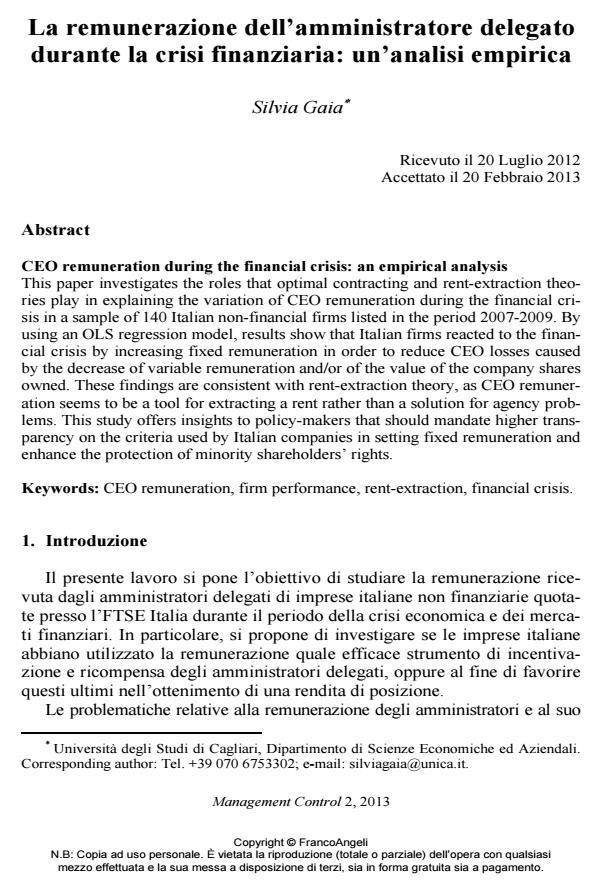CEO remuneration during the financial crisis: an empirical analysis
Journal title MANAGEMENT CONTROL
Author/s Silvia Gaia
Publishing Year 2013 Issue 2013/2
Language Italian Pages 18 P. 111-128 File size 711 KB
DOI 10.3280/MACO2013-002006
DOI is like a bar code for intellectual property: to have more infomation
click here
Below, you can see the article first page
If you want to buy this article in PDF format, you can do it, following the instructions to buy download credits

FrancoAngeli is member of Publishers International Linking Association, Inc (PILA), a not-for-profit association which run the CrossRef service enabling links to and from online scholarly content.
This paper investigates the roles that optimal contracting and rent-extraction theories play in explaining the variation of CEO remuneration during the financial crisis in a sample of 140 Italian non-financial firms listed in the period 2007-2009. By using an OLS regression model, results show that Italian firms reacted to the financial crisis by increasing fixed remuneration in order to reduce CEO losses caused by the decrease of variable remuneration and/or of the value of the company shares owned. These findings are consistent with rent-extraction theory, as CEO remuneration seems to be a tool for extracting a rent rather than a solution for agency problems. This study offers insights to policy-makers that should mandate higher transparency on the criteria used by Italian companies in setting fixed remuneration and enhance the protection of minority shareholders’ rights.
Keywords: CEO remuneration, firm performance, rent-extraction, financial crisis.
Silvia Gaia, La remunerazione dell’amministratore delegato durante la crisi finanziaria: un’analisi empirica in "MANAGEMENT CONTROL" 2/2013, pp 111-128, DOI: 10.3280/MACO2013-002006